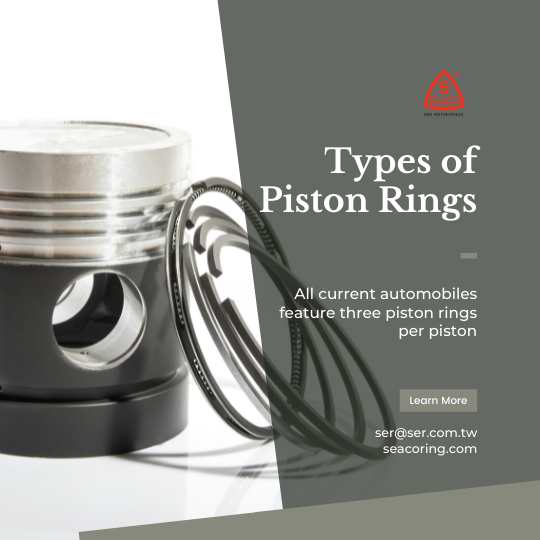NEWS
2021 / 10 / 13
Understanding Piston Rings: Function, Types, and Importance

The Basics of Piston Rings
Piston rings are circular bands that fit into grooves on the outer surface of a piston. These rings are designed to seal the gap between the piston and the cylinder wall within an engine. Their primary function is to:
- Seal the Combustion Chamber: One of the most critical functions of piston rings is to seal the combustion chamber. When the air-fuel mixture is ignited in the cylinder, the resulting high-pressure gases must be contained within the combustion chamber to generate power effectively. The rings create a barrier that prevents these gases from escaping into the crankcase.
- Lubricate: Piston rings also play a role in distributing oil along the cylinder walls to lubricate and reduce friction. This ensures that the piston moves smoothly within the cylinder and minimizes wear and tear.
- Heat Transfer: Another key function is heat transfer. The rings help dissipate excess heat from the piston to the cylinder wall, preventing overheating and potential engine damage.
Types of Piston Rings
There are several types of piston rings, each designed to perform specific functions within the engine. The most common types include:
- Compression Rings: These rings are responsible for sealing the combustion chamber. They prevent the escape of high-pressure gases into the crankcase. Compression rings are typically made of tough, heat-resistant materials to withstand the extreme conditions in the combustion chamber.
- Oil Control Rings: Oil control rings are designed to manage the distribution of oil along the cylinder walls. They help prevent excessive oil from entering the combustion chamber, which could result in poor combustion and increased emissions. These rings often have special grooves and features to control oil flow effectively.
- Wiper Rings: Wiper rings are a variation of oil control rings and are designed to remove excess oil from the cylinder walls. This helps maintain an optimal oil film for lubrication while preventing oil from entering the combustion chamber.
- Rail Rings: Rail rings serve as support for the compression and oil control rings, holding them in place within the piston grooves. They are typically made of sturdy materials to ensure proper ring stability during engine operation.
The Importance of Piston Rings
Piston rings are vital for the efficient and reliable operation of internal combustion engines for several reasons:
- Reduced Emissions: Effective piston rings ensure that the combustion process is sealed, leading to better fuel combustion and reduced emissions. This is essential for meeting environmental regulations and improving fuel efficiency.
- Longevity: By reducing friction and heat within the engine, piston rings contribute to the longevity of the engine components. Proper lubrication and heat transfer help prevent premature wear and damage.
- Power and Efficiency: Well-maintained piston rings help maintain the engine's power and efficiency. Leaky or worn rings can lead to power loss and reduced performance.
- Reduced Oil Consumption: Properly functioning oil control rings help regulate oil consumption, preventing excessive oil consumption and the need for frequent oil top-ups.
In conclusion, while piston rings may seem like small and inconspicuous components, their role in internal combustion engines is of utmost importance. They contribute to engine performance, efficiency, and longevity, making them a critical part of the automotive world. Proper maintenance and quality materials in piston rings are essential to ensure the reliable operation of engines, and the continued advancement of automotive technology relies on the continued improvement of these small but significant components.
